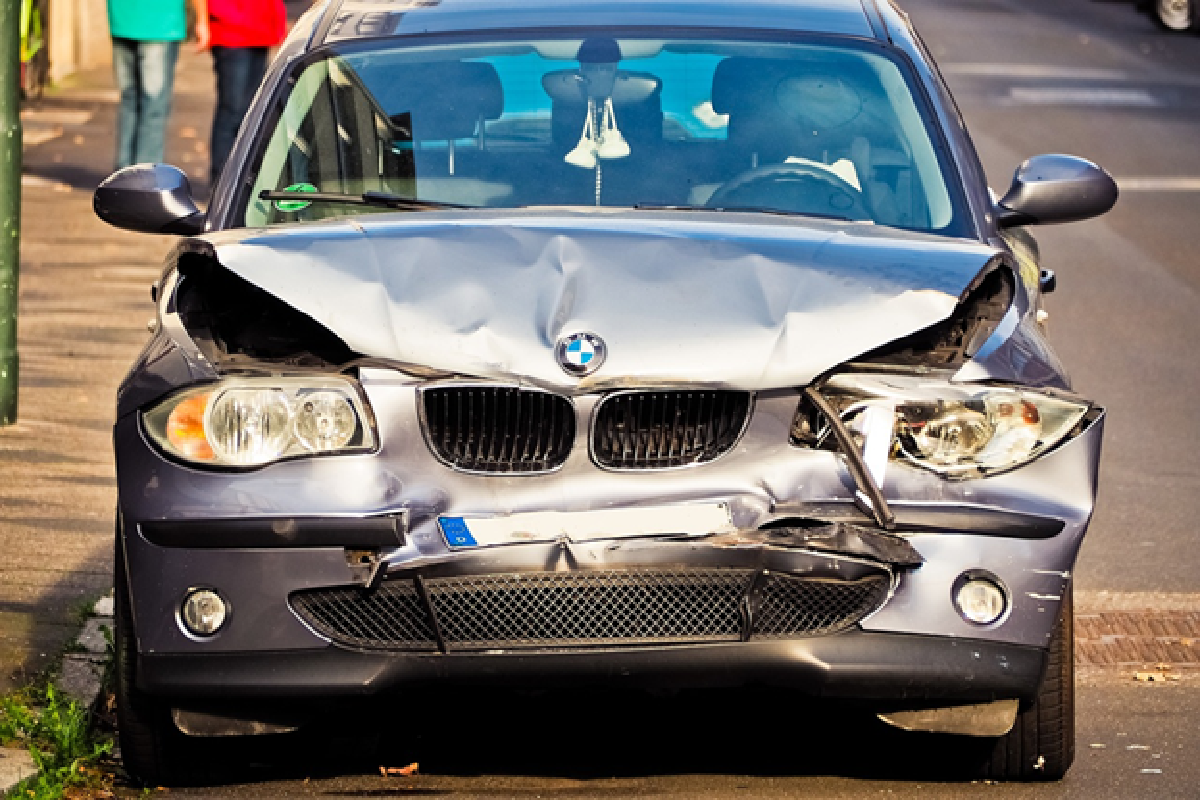Contents of this Post
ToggleIf you’ve recently been involved in a car accident and want to know who holds responsibility. You’re not alone. Over 5.2 million vehicle accidents were reported to police in the U.S. during 2020 which makes fault determination a necessary yet complicated task.
The good news? Knowing the process of fault determination provides protection for your rights and makes certain you receive equitable treatment following an accident. The best auto accident attorney makes the process of navigating fault determination much simpler.
We will explore all essential information you need to understand fault determination in car accidents.
Inside This Guide:
- Understanding Fault Basics
- Key Evidence Used to Determine Fault
- Common Types of Fault Scenarios
- The Role of Insurance Companies
- Steps to Protect Your Rights
- Legal Options When Fault is Disputed
Understanding How Fault Works in Car Accidents
The process of assigning fault for car accidents often presents significant complexities. Recent statistics show that police reports do not include 60% of property-damage-only crashes and 32% of injury crashes. The lack of police reports significantly complicates the process of determining fault.
Fault determination typically involves:
- Reviewing police reports
- Analyzing accident scene evidence
- Gathering witness statements
- Evaluating traffic laws that were broken
- Assessing driver behavior and actions
Police reports serve as essential documents because they officially document the details of the accident. Multiple elements beyond police reports influence the determination of fault.
Key Evidence Used to Prove Fault
Evidence serves as the ultimate determinant in establishing who caused an accident. Here are the main types of evidence used:
Physical Evidence:
- Damage to vehicles
- Skid marks on the road
- Debris location
- Traffic camera footage
- Weather conditions
Documentation:
- Police reports
- Insurance claims
- Medical records
- Vehicle repair estimates
- Photos from the scene
Statements and Testimony:
- Driver accounts
- Witness statements
- Expert analysis
- Police officer observations
Building your case requires collecting as much evidence as possible to make it stronger. The rising trend in car accident fatalities demands attention because official data confirms that 42,915 people lost their lives in vehicle crashes during 2021.
Common Types of Fault Scenarios
Accident scenarios sometimes result in obvious fault determination but other times present complex situations. Here are some common scenarios and how fault is typically assigned:
Rear-End Collisions: Drivers who collide from behind are generally held responsible because maintaining safe following distances is mandatory for all drivers. If the driver in front braked abruptly without any reason or their brake lights were nonexistent or faulty then they could bear partial responsibility.
Left Turn Accidents: The left-turning driver normally holds responsibility because they need to let oncoming traffic proceed first. The other driver might have shared fault if they violated traffic laws by either running a red light or speeding.
Parking Lot Accidents: Determining who is at fault in parking lot accidents requires consideration of factors such as right-of-way rules and the movement status of vehicles involved. The involvement rate of drivers aged 16-20 stands at 9,320 per 100,000 which underscores why extra caution in parking lots becomes essential.
The Role of Insurance Companies in Fault Determination
Insurance companies take a leading role in establishing fault following an accident. Insurance companies perform their own investigations and frequently negotiate between themselves when deciding how to divide fault percentages.
Here’s how insurance companies typically handle fault determination:
Claims Investigation: Insurance adjusters analyze all collected evidence which consists of police reports together with photographs and witness statements during claims investigation. Insurance companies dispatch their own investigators to assess both accident sites and vehicles.
Fault Percentage: Comparative negligence laws allow many states to divide fault percentages between the drivers involved. One driver may receive a 70% fault assignment as opposed to the other driver who will be held 30% responsible. The amount insurance companies pay depends on fault distribution.
Settlement Negotiations: After determining who was at fault insurance companies begin their settlement negotiation process using several financial factors.
- Repair costs
- Medical expenses
- Lost wages
- Pain and suffering
- Other related damages
Following these steps will protect your rights after an accident.
Taking appropriate steps right after an accident plays a critical role in determining who is at fault. Emergency department visits for pool accidents number over 6,500 annually yet car crashes remain more prevalent and demand urgent care.
Here’s what you should do:
- Stay at the Scene: Do not exit the accident location until conditions permit you to depart safely. Departing from the crash site too soon exposes you to legal risks and complicates fault determination.
- Document Everything: Record all details at the scene with photos and videos from your phone.
- Vehicle damage
- The accident scene
- Road conditions
- Traffic signs and signals
- Visible injuries
- Gather Information: Collect important details including:
- Other driver’s insurance information
- Witness contact information
- Police officer’s name and badge number
- Accident report number
- Seek Medical Attention: Have a medical professional examine you even if you seem unharmed. Certain injuries may not be noticeable right away but medical documentation becomes important for establishing damages in the future.
- Report the Accident: It is important to contact your insurance company immediately after the accident. Tell the truth about what happened yet only provide factual details. Avoid taking responsibility for the incident and resist forming premature conclusions about how it happened.
- Contact a Lawyer: In cases where fault determination becomes contested or injuries occur, consulting with a legal professional is advisable. Legal professionals will defend your legal rights and ensure evidence maintenance during the fault determination process.
Legal Options When Fault is Disputed
In some cases determining liability can be complicated which may require you to defend your legal rights. Here’s what you need to know about handling disputed fault cases:
Gathering Additional Evidence: Your lawyer is capable of sourcing essential evidence which may not be readily accessible.
- Surveillance footage
- Cell phone records
- Vehicle computer data
- Expert accident reconstruction reports
Understanding State Laws: The laws concerning fault and compensation vary from one state to another. For example:
- Some states use pure comparative negligence
- Others use modified comparative negligence
- A few states still use contributory negligence
Alternative Dispute Resolution: Before filing a court case you can pursue Alternative Dispute Resolution options.
- Mediation
- Arbitration
- Settlement conferences
These methods provide a quicker and more affordable resolution compared to complete trials.
When Multiple Parties Are Involved
Fault determination becomes especially complicated when multiple vehicles are involved in accidents. Data reveals that accidents involving several vehicles tend to produce both greater injuries and increased legal complexity.
Key considerations in multi-party accidents include:
- Chain reaction responsibility
- Individual driver contributions
- Shared fault percentages
- Insurance policy limits
- Commercial vehicle involvement
Proper legal representation becomes essential because each insurance company will conduct its own separate investigation.
The following mistakes should be avoided during fault assessment procedures.
Choosing incorrect actions during fault determination can significantly damage your legal position. Here are key mistakes to avoid:
- Admitting Fault at the Scene: Saying “I’m sorry” at the scene of an accident could harm your legal standing. Perform information exchange and ascertain everyone’s safety status.
- Neglecting Documentation: Your case becomes stronger as you gather more evidence. Never rely solely on the police report for information because you should create your own photographic and written records.
- Delaying Medical Treatment: A delay in obtaining medical treatment can weaken the connection between your injuries and the accident.
- Talking to Other Insurance Companies: Your insurance company or lawyer should be the only ones to talk to other insurance agencies. Other insurers may attempt to minimize your claim by utilizing your statements.
- Accepting the First Settlement Offer: Insurance companies begin negotiations with settlement offers that tend to be lower than expected. You should determine the total amount of your damages before agreeing to any settlement offer.
Time Limits for Fault Determination
The fault determination process should start immediately to meet legal deadlines and secure clear evidence. Each state sets strict deadlines called statutes of limitations which dictate when accident claims must be filed. The time to file accident claims varies between 1 and 4 years depending on your state’s laws yet starting this process right away helps preserve evidence and witness accounts.
The Bottom Line on Fault Determination
Knowledgable understanding of fault determination processes in car accidents creates significant advantages for your legal rights protection and compensation fairness. You will successfully complete the fault determination process when you maintain appropriate documentation and act promptly while securing legal assistance when required. The actions you perform right after an accident usually play a critical role in establishing who is at fault.

